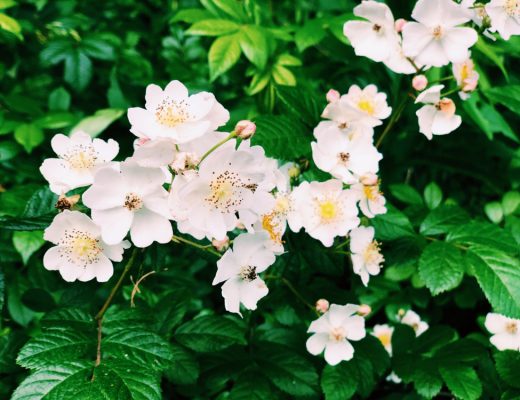How to arrange flowers in a vase is not really something you learn in school (maybe Japan excluded) despite flower arrangement having a long history as an art form. Rather, it is a skill that most of us lack and so we usually end up with arrangements that look a bit off-balance and wobbly. However, if you want to become a flower arranging pro or are just looking for simple ways to show off your flowers then read on and get inspired by these useful tips.
-
Choosing the Right Vase
-
Tall Vase
Flower arrangements in tall vases tend to be more dramatic and fancier than short ones. For a tall piece, it is essential to pick flowers that have long and strong stems that will make the arrangement look more vivid. Learning how to arrange flowers in a tall vase is also usually easier as you can follow the contours of the vase itself, which can give direction to your arrangement.
-
Round Vase
Round vase floral arrangements are a little bit harder to achieve than tall ones (you can’t really get away with placing a single pink tulip and expect it to work out like in tall vases.) Generally, round vases tend to give a sweeter look to your arrangement. Roses, chrysanthemums, daisies, and carnations tend to fit in round vases very well.
Extra tip: If you are having trouble arranging flowers in a round vase you can easily form a grid out of clear tape placed on the rim of the vase and use it to help the placement of your flowers.
-
Alternative Vases
If you’re not too thrilled about conventional vases, you can skip all of the above and try some alternative containers. Some great examples of objects to place your flower arrangements in are:
- Your grandma’s old rusty teapot for a fabulous vintage look
- A repurposed tin can
- An (unfortunately empty) bottle of wine
This way your flower arrangement will look exceptionally unique. Favor flowers like anemones and daisies in alternative vases to achieve a more boho look.
-
Styling your flower arrangement
-
Linear or Ikebana
Ikebana is the famous, ancient, Japanese technique of arranging flowers (there are about 1,000 schools there where you can go to learn about it!) It is a simple flower arranging method that primarily appreciates the simple beauty of nature and space. It is based on the harmony of plain compositions and the delicate beauty of the flowers. Despite its simple looks, it is said that it takes 3 to 5 years to learn the basic techniques of Ikebana. If you are a lover of minimalist style be sure to check out our YouTube to get some great ideas for achieving this striking look.
-
Traditional – European
A traditional flower arrangement or “mass arrangement” is a composition that usually requires a lot of different flowers. Its philosophy is based on symmetry, and it results in a somewhat more complex appearance, established through the diversity of its flowers. There is usually a flower-protagonist lying at the center, framed by other flowers that lean towards the left and right, thus completing the composition.
Always be careful of the vase you choose when arranging a traditional flower arrangement, as it plays a very important role in the whole design.
-
Picking out colors
-
Complementary colors
Complementary colors are colors that highlight each other and work out well together. If you really haven’t a clue about how to arrange flowers in a vase, choose a combination of Yellow-Purple, Blue-Orange, or Red-Green (which are the basic complementary colors) to get your composition started.
-
Single color arrangements
Choosing to go with single-color flowers is a bolder and more intense option. The essence of making a single color flower arrangement work is to choose flowers with attractive shapes. If you want to go all the way, don’t be afraid to choose the same color and the same flower. A round vase floral arrangement with single-color flowers of the same kind, like white roses, makes an impeccable statement piece that is sure to catch your guests’ eye.
-
Preparing the flowers
-
Stems
When your flowers arrive, be sure the first thing you do is to cut the stems like we demonstrate here. Cutting them at a sharp angle (45 degrees) will maximize the surface that enables water intake and helps the flowers to stay alive longer.
-
Leaves
Be sure to strip away all the leaves that would otherwise end up rotting in the vase and lowering the tone of the whole Bouq.
-
Pollen
Flowers, such as lilies, contain pollen in their stamens which can easily stain your clothes or furniture permanently. When completing your arrangement, remove the pollen to make sure you steer clear of any possible stain-disaster.
Don’t forget to check out more of our tips on arranging flowers!
Here at The Bouqs Company, we want your flowers to look perfect, not only when they arrive to you but for many days after, as they sit in the middle of your dining or living room, brightening up your day. Now that you know how to arrange flowers in a tall vase, a round vase, or a Campbell’s can, and understand how to style them to your taste and pick the right colors, it’s time to go out and get adventurous. And, if you fail, we’re always here when you’re ready for your next online flower order with arrangements for inspiration.
Shop All



